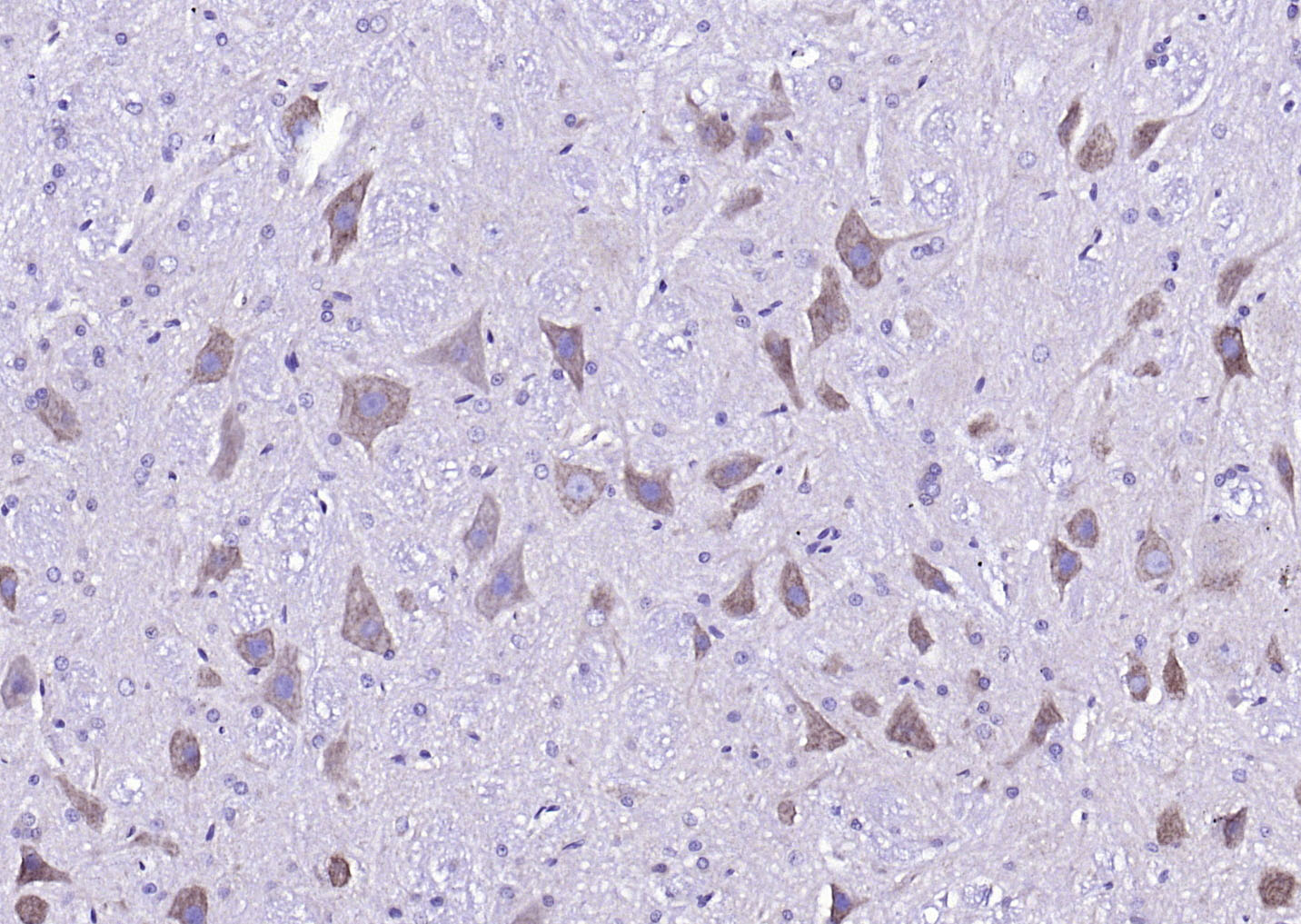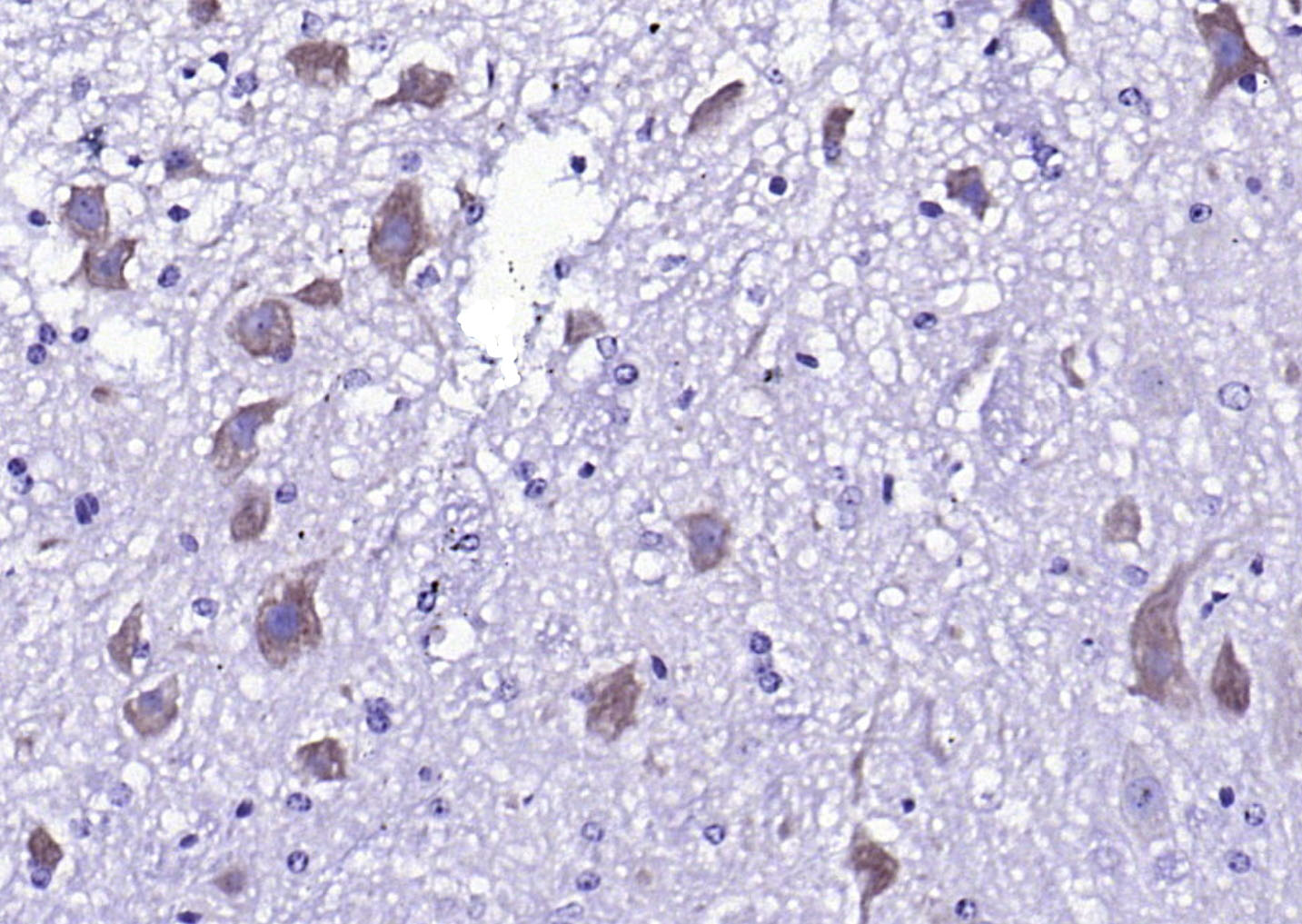
Rabbit Anti-Phospho-NMDAR2A (Tyr1325)antibody
NMDAR2A (phospho Y1325); p-NMDAR2A (phospho Y1325); Glutamate [NMDA] receptor subunit epsilon 1; Glutamate [NMDA] receptor subunit epsilon-1; Glutamate receptor; Glutamate receptor ionotropic N methyl D aspartate 2A; GRIN 2A; GRIN2A; HNR2A; N methyl D asp
View History [Clear]
Details
Product Name Phospho-NMDAR2A (Tyr1325) Chinese Name 磷酸化谷氨酸受体2A抗体 Alias NMDAR2A (phospho Y1325); p-NMDAR2A (phospho Y1325); Glutamate [NMDA] receptor subunit epsilon 1; Glutamate [NMDA] receptor subunit epsilon-1; Glutamate receptor; Glutamate receptor ionotropic N methyl D aspartate 2A; GRIN 2A; GRIN2A; HNR2A; N methyl D aspartate receptor channel, subunit epsilon 1; N Methyl D Aspartate Receptor Subtype 2A; N methyl D aspartate receptor subunit 2A; N-methyl D-aspartate receptor subtype 2A; NMDA receptor subtype 2A; NMDA Receptor Type 2A; NMDAR 2A; NMDAR2A; NMDE1_HUMAN; NR 2A; NR2A; OTTHUMP00000160135; OTTHUMP00000174531. literatures Product Type Phosphorylated anti Research Area Cell biology immunology Neurobiology The cell membrane受体 The cell membrane蛋白 Immunogen Species Rabbit Clonality Polyclonal React Species Human, Mouse, Rat, (predicted: Chicken, ) Applications ELISA=1:5000-10000 IHC-P=1:100-500 (Paraffin sections need antigen repair)
not yet tested in other applications.
optimal dilutions/concentrations should be determined by the end user.Theoretical molecular weight 165kDa Cellular localization The cell membrane Form Liquid Concentration 1mg/ml immunogen KLH conjugated Synthesised phosphopeptide derived from human NMDAR2A around the phosphorylation site of Tyr1325: NF(p-Y)GS Lsotype IgG Purification affinity purified by Protein A Buffer Solution 0.01M TBS(pH7.4) with 1% BSA, 0.03% Proclin300 and 50% Glycerol. Storage Shipped at 4℃. Store at -20 °C for one year. Avoid repeated freeze/thaw cycles. Attention This product as supplied is intended for research use only, not for use in human, therapeutic or diagnostic applications. PubMed PubMed Product Detail N-methyl-D-aspartate (NMDA) receptors are a class of ionotropic glutamate-gated ion channels. These receptors have been shown to be involved in long-term potentiation, an activity-dependent increase in the efficiency of synaptic transmission thought to underlie certain kinds of memory and learning. NMDA receptor channels are heteromers composed of the key receptor subunit NMDAR1 (GRIN1) and 1 or more of the 4 NMDAR2 subunits: NMDAR2A (GRIN2A), NMDAR2B (GRIN2B), NMDAR2C (GRIN2C) and NMDAR2D (GRIN2D). Alternatively spliced transcript variants encoding different isoforms have been found for this gene. [provided by RefSeq, Aug 2008]
Function:
NMDA receptor subtype of glutamate-gated ion channels possesses high calcium permeability and voltage-dependent sensitivity to magnesium. Activation requires binding of agonist to both types of subunits (By similarity).
Subunit:
Forms heteromeric channel of a zeta subunit (GRIN1), a epsilon subunit (GRIN2A, GRIN2B, GRIN2C or GRIN2D) and a third subunit (GRIN3A or GRIN3B). Found in a complex with GRIN1 and GRIN3B. Found in a complex with GRIN1, GRIN3A and PPP2CB. Interacts with PDZ domains of AIP1, INADL and DLG4. Interacts with HIP1 and NETO1 (By similarity). Interacts with LRFN2 (By similarity).
Subcellular Location:
Cell membrane; Multi-pass membrane protein. Cell junction, synapse, postsynaptic cell membrane; Multi-pass membrane protein.
Similarity:
Belongs to the glutamate-gated ion channel (TC 1.A.10.1) family. NR2A/GRIN2A subfamily.
SWISS:
Q12879
Gene ID:
2903
Database links:Entrez Gene: 2903 Human
Entrez Gene: 14811 Mouse
Omim: 138253 Human
SwissProt: Q12879 Human
SwissProt: P35436 Mouse
Unigene: 411472 Human
Unigene: 2953 Mouse
Unigene: 9710 Rat
Product Picture
References (0)
No References
Bought notes(bought amounts latest0)
No one bought this product
User Comment(Total0User Comment Num)
- No comment




 +86 571 56623320
+86 571 56623320
 +86 18668110335
+86 18668110335

